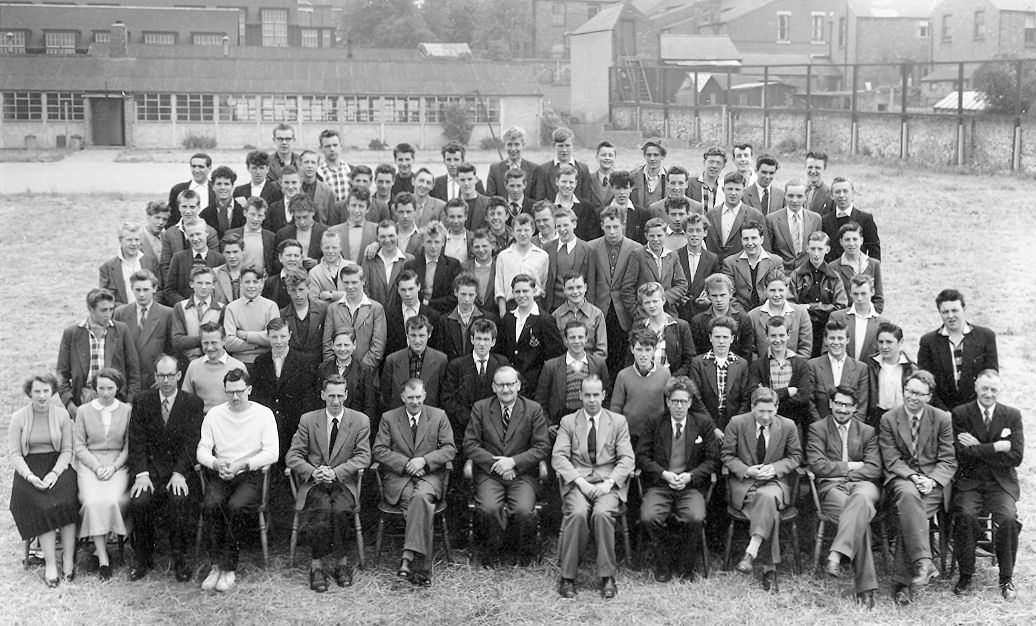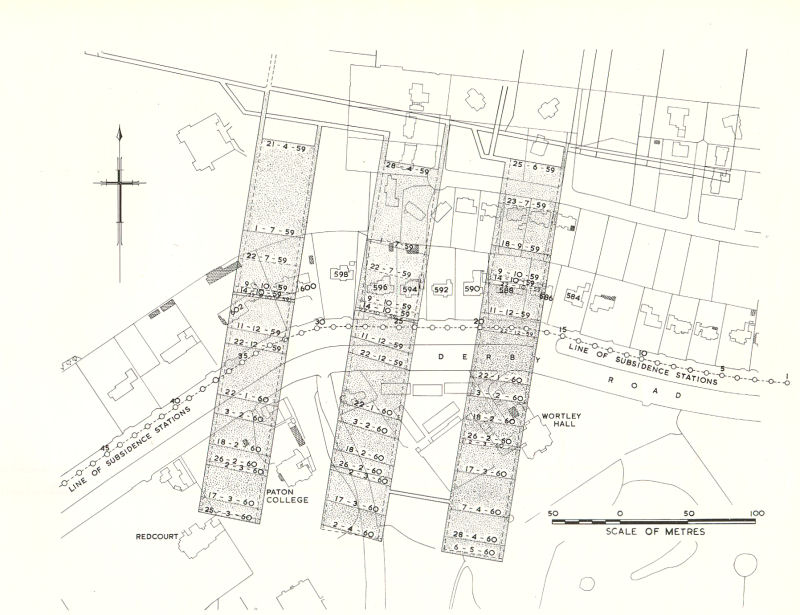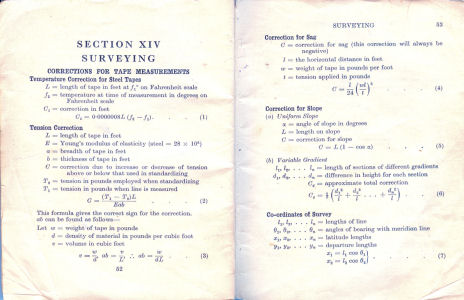In-Bye
My Experiences with the National Coal Board
(East Midlands Division No.6 Area) 1957 1962.
Jim Linwood

1962
Beginnings
I left Chandos School in Netherfield, Nottingham in 1956 when I was 15. Id expressed an interest in becoming an electrical engineer like my father and was taken on as an apprentice at Ericssons in Beeston. I hated working in a factory and wanted something more adventurous. The Youth Employment Officer suggested the National Coal Board where there were plentiful opportunities for training. I was apprehensive at first but, nevertheless, attended an interview and medical at Gedling Colliery and was signed on as a Trainee Miner.
Bestwood/Hucknall Training June Sept 1957
As miners were exempt from National Service, it was deemed proper that all trainees be given the boot camp experience. The 3-month training period was split on alternate weeks between Bestwood Colliery and a school in Hucknall. At Bestwood the 75 trainees in my group learnt the basics of mining (including first-aid, pony care and gas detection) both underground and in the training centre, which had a replica coal face. At the Hucknall School, regular teachers taught us Maths, English and History as it was assumed (wrongly) that miners had a poor level of education. Each morning began with a cross-country run and work out in the school gym to toughen us up. During the training period I had decided that I didnt want to be an electrician but a mine surveyor instead as I was an amateur astronomer and thought it would be rewarding to be paid for looking through a telescope.
Staff and pupils Hucknall Training Centre 1957 (Im 6th from the right, 5th row)
Gedling Colliery The Tippler Sept 1957 Jan 1958
After 3-months the trainees were sent to their nearest pit to begin work. I was sent to Gedling Colliery and lined up with 10 others at six in the morning to be assigned work. It was like a slave market, no one had a say in what work they wanted but were assigned jobs by the Training Officer based on their looks. I was assigned to the tippler. The tippler was a machine that turned mine cars full of coal through 180 degrees onto a conveyor belt at the bottom of a steep drift. The coal would find its way to larger mine cars at the top of the drift and then to the surface. The smaller mine cars would return to the coalface in-bye clipped onto a moving cable just above ground level between the tracks. My job was that of "dogger-on"; when the empty mine cars had been man-handled out of the tippler it was my job to couple them together in groups of five and send them back to the coal face. This involved coupling each car together with short lengths of chain and attaching the lead car to the moving cable using a large metal clip. The tippler and me parted company when I injured my right hand under the wheel of a mine car while trying to retrieve a coupling chain I had dropped. Although not serious (I still have the scars), I was off work for a month and when I returned the Training Officer, remembering my original choice of vocation, offered me the job of "linesman" with the Survey Section.
Gedling Colliery Survey Section Jan 1958 Jan 1959
The role of the linesmen was to work in pairs measuring up the weekly advances of each coal face and, using plumb bobs, ensuring that the tunnels kept to the bearings periodically set out by the surveyors using a theodolite (the linesman title is derived from the plumb lines). As the weekly advances could only be measured at weekends, it meant well-paid overtime. I had also started a day release course at Nottingham Technical College studying for ONC/HNC in Mine Surveying. This was the adventurous work Id craved when I broke away from the factory. Of course, in reality, the miners were risking their lives and health in hazardous conditions for relatively little pay. The workforce at Gedling was multi-national; large numbers of West Indians as well as Poles, Ukrainians, Latvians, Russians and East Germans displaced by the war. It was rumoured that several of the East-Europeans were ex-SS but, in truth, a few had probably been soldiers in the Wehrmacht.
Wollaton Colliery Survey Section Jan 1959 Jan 1961
After an interview with the Chief Area Surveyor, Lewis Spencer, and his assistant, Peter Kay, I was appointed as a Trainee Mine Surveyor and assigned to the Survey Team at Wollaton Colliery. Wollaton was a small "family" colliery which was connected to nearby Radford colliery in the district of Nottingham portrayed in the novel and film Saturday Night and Sunday Morning. The 4-man survey team (plus 2 linesmen) was led by Ray Holmes who had worked at Gedling and had just been made Team Leader after qualifying as a Certified Mine Surveyor. Under Ray I learnt how to use a theodolite, the level and taking accurate measurements as well as the draughtsmanship required for the plotting of mine and land surveys. In addition to plotting statutory maps showing the positions of the mine workings, the Survey Section was also responsible for preparing ventilation, rescue and fire-fighting plans.

Watts' No.1 Mining Traverse Equipment

Cooke, Troughton & Simms' S.400 Level

During my time at Wollaton it was decided to mine under Nottingham University. To avoid damage it was decided to use the partial extraction method in which three longwall faces were driven in the Deep Hard seam with substantial pillars left between them. This operation between April 1959 and May 1960
involved considerable precision monitoring by the survey team of underground and surface movement.
Partial Extraction under Nottingham University
All the tasks I undertook were recorded in a personal "Progressive Record" of my training.
My Progressive Record 28/12/59 4/2/60
The Mining Student's Bible
Bestwood HQ Subsidence Monitoring Jan 1961 June 1961
In January 1961 I was transferred to the Bestwood HQ to work with Ray Kime monitoring and plotting subsidence. This involved precision levelling of surface subsidence stations positioned above advancing coal faces. One such line of subsidence stations ran along the Trent towpath between Burton Joyce and Stoke Bardolph above workings from the Gedling Colliery High Hazles seam.
Subsidence Damage
Gedling Colliery Survey Section June 1961 November 1962
I was back at Gedling in June 1961 working for the Survey Team Leader, Dick Pickering, and his assistant, Johnny Beeden. By this time the old pithead offices, canteen and baths had been replaced by modern structures and the working conditions had improved. A major project I was involved in at Gedling was the installation of a cable belt system along one of the major mine roads. A cable belt uses steel wire ropes to take the tensile pull, which in a conventional conveyor is taken by the belt. Two-stranded steel ropes, one on either side of the conveyor, are used for this purpose. The advantage of cable belts over belt conveyors are that they can handle steep gradients and substantially reduce spillage and belt wear.
By this time many of my friends had moved to London and I was courting a girl from Salisbury. It was therefore logical for me to find work as a surveyor in London to be closer to my girlfriend. I left the NCB in November 1962 and began work for the Corporation of London.
Prologue
After getting married we returned to Nottingham in 1964 for three years and lived in a flat in Westdale Lane Carlton overlooking Gedling Colliery. I studied Municipal Engineering working for various local authorities. With the GLC, Thames Water, the National Rivers Authority and finally the Environment Agency, I was a Development Planning Engineer protecting London's river flood defences. In mid-life I obtained a Master's degree in Earth Science from Kingston University and became a Fellow of The Geological Society.
I have recently retired and live in West London with my wife. We have two daughters.
Jim Linwood 2007
LINKS:
Coal, Colliery and Mining Forum
Dark As A Dungeon - Merle Travis
Images from the 1984 Miners Strike
Nottinghamshire NUM Ex & Retired Miners Association







